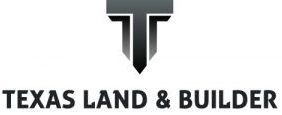River Crossing is a prestigious community located in Spring Branch, Texas, nestled in the scenic Texas Hill Country. Known for its large, private lots, luxury custom homes, and proximity to the Guadalupe River, River Crossing offers a blend of natural beauty and upscale living. For those interested in building a home in this community, it’s important to understand the requirements, guidelines, and considerations to ensure a smooth process that meets the area’s standards and maintains the neighborhood’s high-end appeal.
Key Considerations for Building in River Crossing
1. Lot Sizes and Types
River Crossing offers a range of lot sizes, typically from 1 to 5 acres, giving homeowners plenty of space for privacy and custom design. The lot sizes can affect the scope of the home you plan to build, as well as landscaping requirements, especially if you wish to take advantage of the natural beauty and tree coverage on the property.
2. Architectural Guidelines
The River Crossing Property Owners Association (POA) has established architectural guidelines to ensure the community maintains its upscale, cohesive appearance. These guidelines dictate the general style, materials, and overall look of homes built in the area.
- Home Size: There is often a minimum square footage requirement for homes to maintain the community’s luxury standard. For example, homes must typically be no smaller than 2,500 square feet for a single-story home or 3,000 square feet for a two-story home.
- Exterior Materials: River Crossing encourages the use of natural and high-quality materials such as stone, stucco, and wood. These materials are in harmony with the Texas Hill Country’s aesthetic and ensure a lasting, durable finish.
- Roofing: High-quality roofing materials such as tile, metal, or architectural shingles are often required to ensure both durability and aesthetics. Flat roofs or less durable materials may not meet community standards.
3. Style and Design
While the community allows for various architectural styles, there is a preference for designs that blend with the natural environment of the Texas Hill Country. Many homes in River Crossing feature Mediterranean, Hill Country, or Ranch styles, often incorporating earthy tones, large windows for natural light, and outdoor living spaces.
- Outdoor Living: Due to the beautiful surroundings, many homeowners prioritize outdoor spaces such as patios, decks, and swimming pools. Designs often include outdoor kitchens, fire pits, and landscaping that integrates seamlessly with the natural landscape.
4. Environmental Considerations
Building in River Crossing involves respecting the natural environment. The community has a focus on preserving native trees and vegetation. As a result, some lots may have restrictions on tree removal, and builders are encouraged to design homes that complement the natural topography.
- Water Management: Given the Hill Country’s rocky terrain and occasional heavy rainfall, proper drainage and water management systems are crucial. Builders may need to install rainwater collection systems, irrigation, and well-thought-out grading to prevent water issues.
5. Utilities and Infrastructure
River Crossing provides modern utilities, but there are specific considerations when building in this rural setting:
- Water: Homes are typically supplied by well water or through the Canyon Lake Water Service Company, depending on the location.
- Septic Systems: Given the lack of centralized sewer systems, custom homes in River Crossing generally require individual septic systems. Ensuring the proper design and placement of the septic system is a critical aspect of the building process.
- Electricity and Gas: Electricity is available through local providers and homeowners may consider propane for heating or cooking.
6. Homeowners Association (HOA) and Covenants
The River Crossing Property Owners Association plays an active role in maintaining the quality and value of the community. Homeowners and builders must adhere to the covenants, conditions, and restrictions (CC&Rs) set forth by the HOA.
- Approval Process: Before construction begins, homeowners must submit detailed building plans to the architectural review committee for approval. This process ensures that new homes comply with community guidelines and standards.
- Maintenance Standards: The HOA also sets expectations for property maintenance, including landscaping, exterior upkeep, and fencing. Neglecting these standards can result in fines or other penalties.
7. Golf Course and Amenities
River Crossing is home to a private golf course, a clubhouse, and a variety of amenities that cater to its residents. If your property is located near the golf course, there may be additional guidelines related to setbacks, fencing, and landscaping to ensure that the home doesn’t disrupt the scenic views or interfere with the golf course operation.
8. Building Timeline and Costs
- Custom Builders: Most homes in River Crossing are custom-built, requiring the selection of a local builder familiar with the community’s requirements and the terrain of the Texas Hill Country. Choosing a reputable builder with experience in the area is essential to avoid issues related to the rocky soil, water drainage, and the need for durable, weather-resistant materials.
- Building Costs: Given the luxury nature of the community, building costs are typically higher than average, especially when factoring in the custom nature of homes, the size of the lots, and the quality materials required. Depending on the home’s size, materials, and design complexity, costs can range from $250 to $400 per square foot or more.
Conclusion
Building a custom home in River Crossing, Spring Branch offers an exceptional opportunity to create a luxury residence in the heart of the Texas Hill Country. The community’s architectural standards, scenic beauty, and attention to detail ensure that homes built here not only offer a comfortable living experience but also hold their value over time. However, it’s essential to understand the specific building requirements, from architectural guidelines to utility and environmental considerations, to ensure that your home fits seamlessly within this upscale community. With the right planning and expert builders, you can create a custom home that maximizes the natural beauty of the surroundings and fulfills your dream of Hill Country living.
